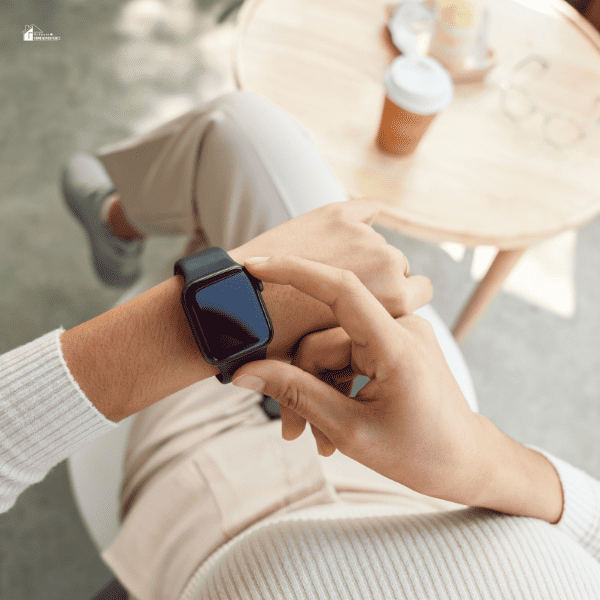How to Assess Canadian Fall Detection Options
This post may contain affiliate links which might earn us money. Please read my Disclosure and Privacy policies hereAssessing fall detection systems in Canada is overwhelming—much like deciding which Timbits to pick at the Tim Hortons. Each one seems essential, but trying to figure out which one will work for you is like playing a high-stakes game of roulette.
A slip, trip, or unexpected fall can turn anyone’s day around faster than leaving your mitts on the bus in January. For Canadian households prioritizing safety, knowing how to choose the right fall detection system is as vital as salting the driveway before a snowstorm.
Every feature, warranty, and system is claimed to be the “most advanced,” but the truth is that not all options are created equal. They differ in reliability, compatibility, and cost; without a clear guide, you might wish for a hotline for the Mounties.
In this post, you’ll get practical advice to help you make an informed decision on fall detection systems.
Let’s get into five key points.

1. Coverage and Range
Fall detection Canada systems work like a safety net, but only if they’re spread out wide enough to catch you. When choosing a system, you’ll want to ensure it provides adequate coverage across your home. Look for models that integrate well with your existing layout and don’t lose signal strength in basements or lofts.
Fall detection in Canada often means contending with multi-story homes and detached garages—all spaces that must be monitored effectively.
Many systems boast impressive range capabilities on paper, but checking how they perform in real-world conditions is essential. A brick wall or two can weaken signals faster than a snowstorm knocks out your Wi-Fi. Talk to your provider about system tests and inquire whether their devices are tailored to Canadian housing standards, which often differ from homes elsewhere.
Reliability also plays a key role. The consequences can be dire if a system promises to detect a fall but misses because of weak signal strength. Ensuring your fall detection system can navigate the quirks of Canadian architecture will help you feel secure—whether you’re climbing the stairs or heading out to check on the backyard moose (a not-so-uncommon occurrence).
2. Device Accuracy
A fall detection system that overreacts will become more annoying than the geese that return each spring. Devices must distinguish between actual falls and everyday activities like dropping keys or flopping onto the couch after a long day. No one wants paramedics showing up every time you shuffle onto the rug for a mid-afternoon yoga stretch.
Modern systems use advanced algorithms and sensors to detect falls with great accuracy. Look for ones tested in Canadian environments, considering the thick winter layers and occasional ice skates—because even curling rinks aren’t fall-proof. A good system hits the sweet spot and responds to emergencies without raising false alarms that become neighbourhood gossip.
Some also offer adjustable sensitivity settings. That’s a lifesaver if you’re active or live in a busy household. Good fall detection in Canada means minimizing false alarms while every real emergency gets responded to right away.
3. User-Friendliness
When a safety device feels more complicated than assembling an Ikea bookshelf, it will end up unused. Fall detection systems should prioritize ease of use, catering to everyone from tech-savvy millennials to grandparents who still prefer rotary phones. Buttons should be large and intuitive, setup processes clear and quick, and manuals written in plain English (or French, for good measure).
Consider systems that include wearable options, like wristbands or pendants. These devices ensure help is just a click away without requiring a trip to the nearest landline. They should be lightweight and comfortable enough to wear during everyday activities without feeling like you’re accessorizing for a sci-fi convention.
In addition, look for systems with automatic updates or remote troubleshooting. Nobody wants to manually update the firmware when there’s maple syrup to be poured or hockey games to catch.
Choose a system that simplifies maintenance, ensuring it works seamlessly without your constant intervention.

4. Emergency Response Integration Is Crucial
A fall detection device is only as good as what happens after it detects a fall. Effective emergency response systems get the users the help they need. In Canada, where emergency services vary from province to province, choosing a device that works with local resources is key.
Look for systems that offer direct communication with emergency contacts or monitoring centers. Some devices have two-way communication where you can talk to the responders. Others send automatic alerts to pre-programmed contacts, so help arrives quickly. Whether it’s a friend, family member, or an emergency service, knowing help is on the way is priceless.
Consider how the device handles false alarms. No one wants to call an ambulance because they sat down too fast. Many systems have sensitivity adjustments or confirmation features to minimize false alarms. It’s the balance between being ready to go and not wanting to create drama—like finding out your team lost in overtime.
5. Consider Affordability and Ongoing Costs
The final piece of the puzzle is cost. Fall detection in Canada comes with a wide range of price tags. While no one wants to put a price on safety, practicality matters. Consider the upfront costs, subscription fees, and any hidden costs for replacements or updates.
Some offer pay-as-you-go options, and others bundle features into monthly plans. Devices with professional monitoring come with subscription fees, so it’s worth calculating how these will fit into the budget over time. Self-monitored systems may save on costs but may sacrifice some features like 24/7 coverage.
Assess whether the cost matches the features. A higher price doesn’t always mean a better experience, just like the fanciest sled doesn’t always get you down the hill the fastest. Prioritize systems that deliver within your budget.
After all, safety without financial stress.

Conclusion
Choosing a fall detection system in Canada isn’t just about checking boxes. It’s about combining safety, functionality, and practicality to meet your needs. From icy sidewalks to active living indoors, the right system is more than protection; it’s the confidence to live life to the fullest.
Take your time to review the options, test the features, and prioritize reliability. You’re not just buying a device; you’re buying peace of mind. Like a good pair of winter boots, a reliable fall detection system should follow you wherever you go.







